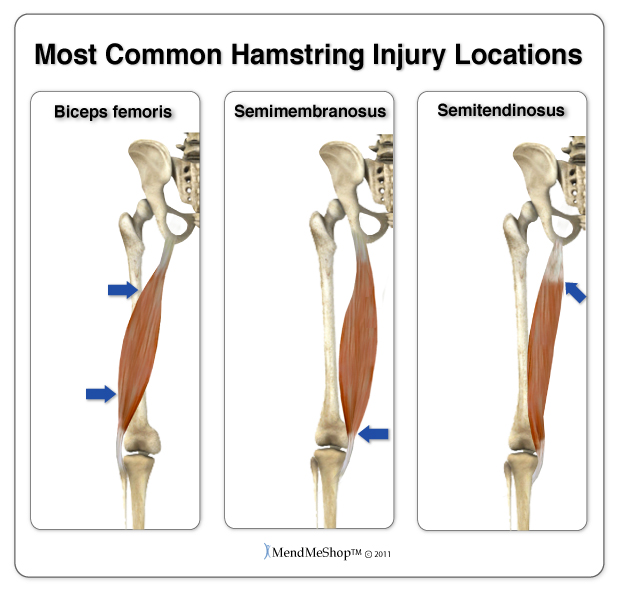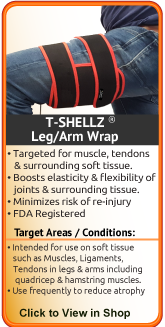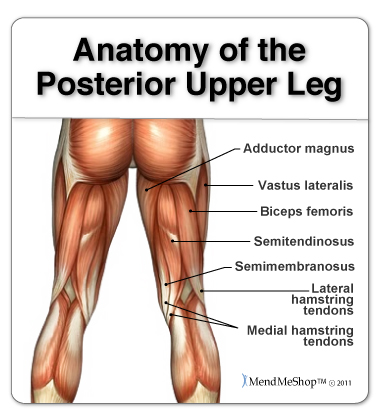|
| Hamstring Muscles The posterior upper leg muscles provide your knees with mobility (extension, flexion and rotation) and strength. They work closely with your quadriceps muscles at the front of your thigh, your gluteal muscles, and your calf muscles to ensure proper movement of your leg and hip. Your hamstring muscles control movement of your torso, hips and knees, help turn your legs in and out, and are involved with power activities that include a lot of propulsion, thrust and control (such as jumping, climbing, and running). They allow your knee to bend (flex the leg at the knee) and pull your leg backward while propelling your body forward when you move (your thigh straightens and extends the leg back at the hip). They are involved with eccentric movements, which increase the length of the muscle while it is under tension - instead of starting an action, the muscles act as a brake to stop an action. You can feel this when walking or running downhill, landing from jumps or performing squats, and when trying to stop quickly after sprinting.  The biceps femoris hamstring muscle is the most frequently injured, as it suffers the largest stretch during sprinting, followed by the semitendinosus muscle. If you have a multi-muscle injury, it normally occurs at the point where your hamstring muscles and tendons meet (musculotendinous junction) at the top of the hamstring muscles. However, hamstring pulls can also occur at any place along the hamstring muscle bellies or in the tendons that attach the muscles to the bones. Hamstring Injury TreatmentsHamstring injuries can be frustrating to live with and difficult to healing. The healing process takes time and you may find it difficult to give your leg the rest it needs. This is especially true for runners and other athletes that return to their sport too early. Re-injury is common but it prolongs recovery and may also lead to permanent damage and other conditions. Treating your hamstring injury correctly is essential to getting rid of your pain and restoring function to your hamstring muscles and tendons. Proper treatment will get you back to regular activities sooner, stop your pain, and reduce the risk of future re-injury. To restore strength and range of motion in your hamstrings, treatment should focus on preventing scar tissue formation and muscle atrophy (shrinkage and weakening of the muscle). This requires rest and the appropriate therapies at the right time. Almost all types of hamstring pulls and tears (except a complete hamstring rupture) can be properly treated with trusted therapies that are available for use at home. Complete ruptures usually require surgery. However, using these home therapies after surgery can help speed recovery, improve function, and increase range of motion in your hamstrings. Learn more about Hamstring Treatments by clicking here Product Advisors are available 9:00 am to 5:00 pm Eastern Standard Time Monday to Friday. Learn More About Hamstring Injuries & TreatmentsI want to learn more about Hamstring Post-Surgery Recovery I want to learn more about the TShellz® Circulatory Boost Wrap I want to learn more about Ice & Heat: Which Is Better For Treatment? I want to learn more about Stretching for the Hamstring I want to learn more about Soft Tissue Injury Treatments During your recovery, you will probably have to modify and/or eliminate any activities that cause pain or discomfort at the location of your soft tissue injury until the pain and inflammation settle. Always consult your doctor and/or Physical Therapist before using any of our outstanding products, to make sure they are right for you and your condition. The more diligent you are with your treatment and rehabilitation, the faster you will see successful results! |
    |
